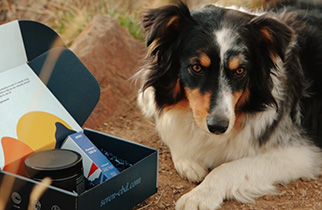What is CBD?
Medical Disclaimer
This CBD product is not for consumption by or sale to somebody below the age of 21. Only those, who are over 18, can use this product. In addition, you should use it as directed on the label. You should not consume it if you are pregnant or nursing.
Consult with your health care before use if you have a severe medical problem or use prescription medications.
Lab reports have not been medically examined or assessed by the Food and Drug Administration and are not FDA-supported. Seren CBD products are not proposed to diagnose, heal, cure or prevent any disease.
This guide includes essential information to help you make intelligent decisions about why and how to utilize CBD oil. It is not meant to provide medical advice. The reader must seek the advice of an efficient medical professional who is well versed in CBD culture before initiating use.
An Overview of Cannabidiol (CBD)
CBD has recently gained a huge coverage in the media. So what exactly is CBD? Why is it quickly so popular?
Diving into the world of CBD can be overwhelming. The first step is understanding the basics—what CBD is, what it does, how it works. That’s what this article is about.
CBD is shorthand for cannabidiol. It’s one of the more than 100 cannabinoids—chemical compounds that act on receptors in your body—found in the cannabis plant.
CBD and tetrahydrocannabinol (THC) are the two most prevalent cannabinoids in the cannabis plant. THC is the cannabinoid that produces marijuana high. CBD won’t get you high. It’s often said to be “nonpsychoactive,” but that description is inaccurate. Because CBD can reduce anxiety and depression, and improve mood and mental acuity, it does have psychological effects. It’s more accurate to say that CBD is nonintoxicating.
CBD and THC are two different varieties of the same plant, Cannabis sativa. The key factor in whether that plant is called marijuana or hemp is how much THC it contains. Hemp is a cannabis plant that contains less than 0.3 percent THC. Marijuana contains more than that amount of THC.
Marijuana can also contain large amounts of CBD, depending on its strain and cultivation. Medical marijuana often contains a relatively high concentration of CBD to temper the intoxicating effects of THC. There are indications from some studies that the combination of THC and CBD can be more effective for some medical conditions than either of the cannabinoids alone.
Of course, in the United States, marijuana is illegal at the federal level and is legalized for recreational use in only 10 states and the District of Columbia. So almost all mass-market CBD products are made from hemp, not marijuana. In this book, we’ll consider only hemp-derived CBD products (i.e., nonintoxicating ones).
In most cases, when people say they’re taking CBD they mean a product of which CBD extracted from hemp is one ingredient. The most popular CBD product types include oil-based tinctures, capsules, and topical solutions (meant to be applied to your skin rather than swallowed).
List of CBD Oil Product Types
There is a wide range of CBD products containing different levels of CBD as well as other naturally occurring ingredients, including terpenes and cannabinoids.
Raw PCR hemp extract
PCR oil or full-spectrum oil includes everything the natural hemp plant contains, with the control of THC levels. The Federal Government allows only up to 0.3% THC in CBD products. Why is it so beneficial?
The motive behind Phytocannabinoid-rich products is that two are more beneficial than one. Think of flavonoids, phytocannabinoids, terpenes, and every segment that makes up hemp, as a member of a family, each with a different character and donation.
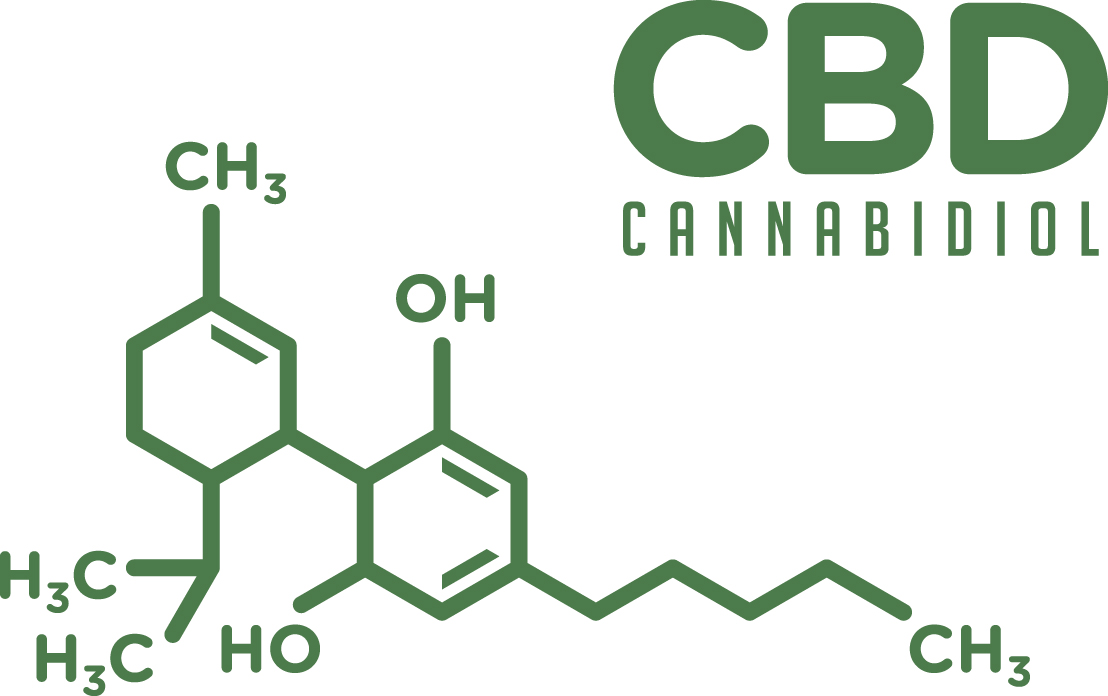
Hemp seed oil
Hemp seed oil includes a high concentration of polyunsaturated fatty acid and is an excellent dietary source of volatile fatty acids, linoleic, and linolenic acid. Linoleic acid is the supreme fatty acid in seed oil. Hemp seed oil is healthy due to its beneficial omega-6: omega-3 fatty acid ratio, 3:1. Although the omega-6: the omega-3 ratio between 3:1 and 5:1 is optimal for proper health, the topic is still uncertain.
Raw industrial hemp extract
It is a poor-quality source of CBD oil.
CBD concentrate or distillate
It is a high CBD hemp concentrate that goes through a purification procedure to remove THC while directing to keep as much — or as little — of the other natural ingredients, including cannabinoids and terpenes in the concentrate as possible.
CBD isolate
It is the pure form of CBD, which is a chemical compound naturally present in the cannabis plant. CBD isolate is THC-free — the psychoactive ingredient of the cannabis plant. CBD isolate is an excellent choice for those who would like to consume only CBD. It is also ideal for those who do not want to ingest any THC components which is the active ingredient in cannabis. Most other CBD products contain at least a small percentage of THC.
Broad-spectrum CBD oil
This oil is rich in CBD. It has the beneficial cannabinoids and terpenes present in the hemp plant, excluding THC.
CBD-rich oil/Phytocannabinoid-rich (PCR)
It can be full spectrum or broad-spectrum CBD oil or concentrate immersed with CBD concentrate.
CBD-infused
Usually, this term refers to a product saturated with pure CBD. But sometimes it also refers to a full spectrum product.
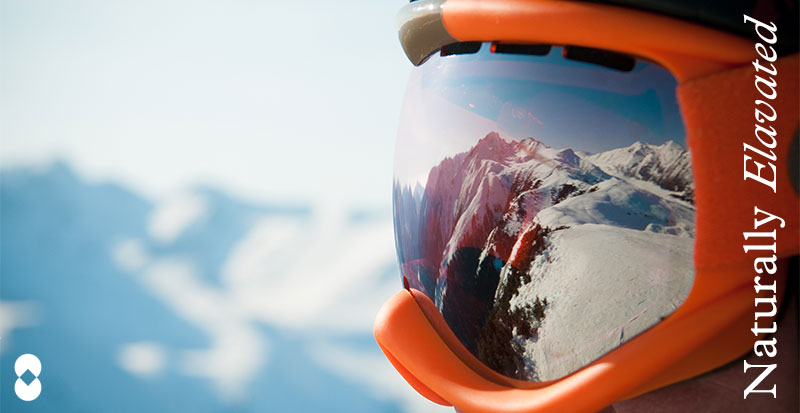
HOW DOES CBD WORK?
CBD and THC communicate with our bodies in many ways. One of the primary ways is by imitating and increasing the outcomes of the compounds in our bodies called “endogenous cannabinoids” – so named due to their similarity to compounds in the cannabis plant. These “endocannabinoids” are a portion of what scientists introduce to as the “endocannabinoid system.”
The endocannabinoid system performs an essential part in controlling a broad range of physiological measures that impacts our everyday experience. These experiences include our mood, intestinal fortitude, energy level, immune activity, blood pressure, glucose metabolism, bone density, how we experience pain, hunger, stress, and more.
After the discovery of the endocannabinoid system, we can now understand health and diseases more closely. It has serious implications for nearly every field of medical science. It also helps to illustrate how and why CBD and THC are such functional compounds.
What happens if the endocannabinoid system doesn’t work well? What are the outcomes of a chronically defective or overactive endocannabinoid system?
According to cutting-edge science, the endocannabinoid system is dysregulated in almost all pathological conditions. Therefore, it reaches to reason that “modulating endocannabinoid system activity may have therapeutic potential in almost all diseases affecting humans,” as Pal Pacher and George Kunos, scientists with the U.S. National Institutes of Health (NIH), suggested in a 2014 publication. By changing the endocannabinoid system and enhancing the endocannabinoid nature, CBD and THC can slow disease growth.
How is cannabidiol or CBD different from marijuana?
CBD is the second most frequent of the active ingredients of cannabis. While CBD is an important component of medical marijuana, it is extracted directly from hemp plants, which are cousins of marijuana plants. While CBD is one of the hundreds of components of marijuana, by itself it cannot get you “high.”
A report of the World Health Organization shows that “In humans, CBD exhibits no effects indicative of any abuse or dependence potential…. To date, there is no evidence of public health-related problems associated with the use of pure CBD.”
So, you’re saying CBD won’t get me high?
The cannabis plant includes CBD and THC. “CBD is the non-psychoactive portion of the plant, so what that means is you won’t have any effects like euphoria,” says Junella Chin, a medical cannabis expert. “You won’t feel sedated or altered in any way.”
There are two possible special cases to this. The first is that some react variably to CBD. According to Dr. Chin, about five percent of people say they experience altered after getting CBD. She further says that “Usually they’re the same people who have side effects from Advil or Tylenol”. You cannot know how your body will react to any new supplement, so follow your consultant’s guidelines when using CBD for the first time.
It’s also essential to purchase third-party-tested CBD for quality assurance. Because of little FDA regulation for CBD products, buying more or less potent product than advertised is a chance.

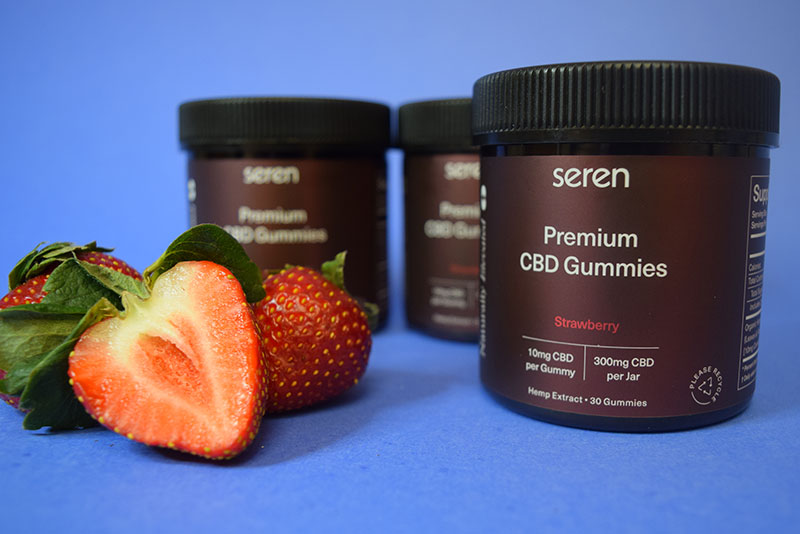
Where does hemp come into all this?
You might have heard the terms marijuana, cannabis, and hemp all turned around with CBD. The plant Cannabis sativa has two main classes, hemp, and marijuana. Both include CBD. But there’s a much higher portion in hemp, which also has very low levels of THC than marijuana.
When people converse about hemp oil, they mean oil extracted from the seeds of the hemp plant. Hemp oil contains two cannabinoids: CBD or THC. This ingredient contains healthy fats and often appears in beauty products for its moisturizing uses.
Is cannabidiol legal?
CBD is easily accessible in most areas of the United States, though its exact judiciary status is in unrest. All 50 states have laws permitting CBD with fluctuating degrees of confinement. While the federal government still studies CBD in the same class as marijuana, it doesn’t habitually enforce against it. In December 2015, the FDA reduced the administrative requirements to enable researchers to organize CBD trials. Currently, many people get CBD online without medical cannabis consent. The government’s position on CBD is complicated and depends partly on whether the CBD falls under hemp or marijuana.
The short answer is that you the consumer can legally buy hemp-derived CBD throughout the United States. That includes buying it online. The longer answer is that there remains legal murkiness around CBD, more on technical grounds than in practical terms. So to reiterate: If you want to buy hemp-derived CBD, you may with no fear of getting arrested. If that answer satisfies you, feel free to skip the following more detailed explanation.
CBD started to take off commercially only after the passage of the federal farm bill. That legislation allowed for the cultivation and marketing of hemp if those activities were for research purposes; were part of an agricultural pilot program or another agricultural or academic program; and were permitted by state laws. The farm bill excluded hemp grown under those conditions from the long-standing federal classification of hemp as a Schedule 1 controlled substance, the same classification given to marijuana. Federal law prohibits commercial production and sale of Schedule 1 substances.

In 2016, the US Department of Agriculture, the Drug Enforcement Administration, and the Food and Drug Administration issued guidance on the sale of products made from hemp grown under the provisions of the 2014 farm bill. The guidance said that these products—read: hemp-derived CBD—could be sold for “purposes of marketing research” but “not for the purpose of general commercial activity.”
If that sounds confusing, it is. People who started a CBD business after the 2014 farm bill became law could have argued that they were conducting “marketing research” on such products, just to gather information on whether and how people might be interested in CBD tinctures. Would that argument hold up in court? Who knows? Also, many said that the “not for the purpose of general commercial activity” phrase went against the intent of the 2014 farm bill. Adding to the uncertainty was that guidance of the sort released in 2016 isn’t legally binding. But wait, there’s more! In 2018, a rider to a federal appropriations act prohibited federal agencies from using federal money in conflict with the 2014 farm bill. That rider included the processing and sale of hemp grown under the farm bill regulations, inside or outside the state in which it was grown. These clauses were widely taken to mean that the federal government was going to let the CBD market be.
“It was a ridiculous situation when operating under the 2014 farm bill,” says Tom Adams, managing director and principal analyst for the consumer cannabis research firm BDS Analytics. “There was a language with a loophole big enough to drive a truck full of CBD through, and everybody did.”
When enacted, the 2014 farm bill’s provisions were to be in place for four years. The 2018 farm bill, signed into law with just a few days remaining in the year, did as expected: it legalized hemp at the federal level. That change was anticipated and celebrated by the CBD industry. Legalization removed whatever concern remained about running afoul of federal drug laws and is widely expected to lead to far more hemp cultivation. And yet… The farm bill legalized hemp. That’s not the same as saying that products made from hemp aren’t subject to federal scrutiny. Within hours of hemp’s legalization, the FDA released a statement about CBD. The gist was that, because of its approval of Epidiolex, the FDA considers CBD to be a drug, not a food additive approved for interstate commerce. Parsing this decree means that the FDA views some CBD products (oils, capsules, and other types that are digested) differently than others (vaping, topical balms, and other types that your body doesn’t process like food).
So uncertainty for the CBD industry remains. “Everyone’s still operating in that gray area much like they were before,” says Riley Cote, owner of BodyChek Wellness. “But until they make a case of someone and shut them down or send notices, we’ll keep operating as we have. Nobody’s going to slow down. In fact, everyone’s ramping up.”
For now, the answer to the is-it-legal question remains as I stated above: you, the consumer, will not be arrested for buying hemp-derived CBD products.
Can you travel with CBD?
Yes, you can now travel with CBD products based on that same 2018 Farm Bill. “Flying with CBD should cause no issues now,” Parrish says. However, if you’re journeying with a CBD tincture, be aware of TSA restrictions on how much fluid you can bring on an airplane, she adds. You also can mail CBD products, just like “companies that comply with the Bill can ship their hemp-derived CBD products anywhere in the U.S.,” Parrish notes.
Will CBD show up on a drug test?
It should not because you’re getting third-party tested CBD, which is potent and THC free, says Dr. Chin. But she does point out that sportsmen, who generally are asked to take more sensitive drug tests, “could potentially test positive” for trace quantities of THC if they’ve been using CBD products.
The evidence for cannabidiol health benefits
The strongest scientific confirmation of CBD health benefits is its efficacy in treating some of the most severe childhood epilepsy disorders, such as Lennox-Gastaut syndrome (LGS) and Dravet syndrome. These normally don’t respond to antiseizure medications.
In countless studies, CBD was able to decrease the number of seizures. In some cases, it was able to prevent them entirely. Videos of the results of CBD on these children and their attacks are quickly accessible on the Internet for viewing, and they are somewhat outstanding.
Currently, the FDA approved the first-ever cannabis-derived medicine to cure these conditions, Epidiolex, which includes CBD. CBD commonly reduces anxiety and inflammation. It is also good to cure patients who have insomnia. In addition, studies indicate that CBD may aid with both staying asleep and falling asleep.
CBD may provide an option for curing different types of severe pain. According to a European Journal of Pain study, CBD topicals could help reduce pain and inflammation due to arthritis using an animal model. Another study showed how CBD prevents inflammatory and neuropathic pain, two of the most challenging types of acute pain to cure. More research in humans is needed in this area to confirm the claims of CBD proponents about pain control.
CBD History

Understanding how CBD produces its potential benefits starts with, interestingly enough, marijuana.
The cannabis plant has been used to treat pain and other ailments for centuries. As with many traditional medicine practices, people didn’t know why cannabis seemed to work. They just knew that it helped them feel better. In the twentieth century, scientists started looking for answers. They were primarily interested in why marijuana produces the subjective feeling of a high, but they also wanted to learn how it provides pain relief and other benefits. In 1964, THC was identified as the intoxicating agent in marijuana. But how exactly THC produced its effects remained unknown.
The answer came in 1988 with the discovery of receptors in the body that THC binds to. THC activates these receptors, which are located on the surface of cells throughout the body. These were named cannabinoid receptors. Within a few years, two main types of cannabinoid receptors, CB1 and CB2, were distinguished. CB1 receptors are located primarily in nerve cells in the brain and spinal cord, while CB2 receptors can be found in the immune and gastrointestinal systems.
If the body has receptors for cannabinoids, then shouldn’t the body have its own cannabinoids? It does, and they were discovered a few years after the receptors were identified. “We produce molecules in the body called endocannabinoids, which bind and activate cannabinoid receptors located on cells throughout the body,” says Nicholas DiPatrizio, Ph.D., a professor of biomedical sciences at the University of California, Riverside School of Medicine. “Think of endocannabinoids as our body’s natural cannabis, in that THC hijacks and activates the same receptors as do endocannabinoids.” (“Endo” means “produced from within.”) The two types of endocannabinoids are anandamide and 2-arachidonoylglycerol (2-AG). DiPatrizio uses the analogy of locks and keys to help nonscientists visualize the interaction of receptors and cannabinoids (either endocannabinoids or external cannabinoids, especially THC). Receptors are the locks and cannabinoids are the keys. When cannabinoids “unlock” the receptors, cellular changes occur in the organ associated with the receptors.
Together, endocannabinoids and cannabinoid receptors are called the endocannabinoid system. Once scientists understood the system’s basic structure, subsequent research led to understanding its profound importance. “The endocannabinoid system is found in every organ throughout the body and controls many physiological processes, including food intake and energy balance, learning and memory, and pain processing, to name a few,” DiPatrizio says. “It’s located everywhere and it’s involved in regulating almost every physiological function that scientists study.”
In this view, the endocannabinoid system is often called things like the body’s “master regulator” or “control system” and is said to be responsible for maintaining homeostasis, or stable equilibrium among other bodily systems. The endocannabinoid system becomes upregulated, which is to say more active when the body is under physical and/or psychological stress.
What does this have to do with CBD? The basic idea is that, as a cannabinoid, CBD can act upon the endocannabinoid system and improve its functioning. Improve the endocannabinoid system’s functioning, and you theoretically improve key bodily functions. Hence the vast potential benefits claimed for CBD.
The precise mechanism by which CBD acts upon the endocannabinoid system hasn’t been delineated. It doesn’t appear to bind to CB1 and CB2 receptors as strongly as THC does. But with CBD being nonintoxicating, it’s possible to take relatively high doses to increase activation of those receptors. “It’s unclear whether CBD directly affects the CB1 and CB2 receptors or if there’s more of a subtle interplay with the body,” says Scott Palmer, MD, a team physician for the Chicago White Sox and Chicago Bulls. “We’re still figuring this out.”
One example of that subtle interplay is CBD reducing the breakdown of or improving signaling of anandamide, one of the two endocannabinoids. The word anandamide is derived from the Sanskrit word ananda, meaning “bliss” or “joy.” Higher levels of anandamide are thought to contribute to the feelings of euphoria many people have during and after exercise. Palmer says that CBD can stimulate the same neurotransmitters targeted by modern antidepressant medications and can block the same pain receptors that common anti-inflammatory drugs do.
This all sounds pretty good! But one night, when my inner skeptic was working overtime, I woke with the thought: Dogs and other mammals have endocannabinoid systems; biologically, it’s been around forever. So if the endocannabinoid system is so important, why does it need an outside product, and an expensive one at that, to function optimally? Why didn’t we evolve with a self-sufficient endocannabinoid system?
The executive summary of the answer I got: the endocannabinoid system didn’t evolve in athletes living in twenty-first-century Western society.
“When the endocannabinoid system becomes really active is when it’s under challenge,” DiPatrizio says. “Most research looks at the body under a pathological challenge, like a metabolic challenge such as diet-induced diabetes. But I think you can infer that modern life, or hard athletic training, could cause the system to become overactive.”
David Raichlen, PhD, a professor of anthropology at the University of Arizona who has studied the endocannabinoid system and exercise, says, “It doesn’t need something [external], but that doesn’t necessarily mean we can’t find ways to piggyback on natural systems and enhance the effects.”
These are reasonable answers, and it should be said that DiPatrizio and Raichlen make these pro-CBD points even though neither feels a personal need to take CBD. Some of Raichlen’s research has been on the energy expenditure of the Hadza people, who are hunter-gatherers in northern Tanzania. In one study, he found that a typical Hadza man covers about seven miles a day on foot.
That level of activity is probably similar to how our long-ago ancestors lived. But the Hadza cover that distance mostly at a leisurely pace, and the work is spread throughout the day. That’s a different undertaking than getting up while it’s dark and squeezing in a seven-mile run on asphalt before you get the kids ready for school and rush off to work.
What Does Research on CBD Show?
“Extraordinary claims require extraordinary evidence,” DiPatrizio says. To date, there’s little of what he and other scientists would consider “extraordinary evidence” for many of CBD’s purported benefits, at least in the form of large clinical trials on humans. For now, let’s look at the overall state of CBD research.
It helps to bear in mind how scientific research on humans is done. The parameters of research are as tight as possible. The study’s aim should be well defined: Does a specific intervention (such as a medication) improve a specific condition (such as incidence of epileptic seizures)? The participants should be divided into two otherwise identical groups, half of whom receive the intervention and half of whom receive what should be a noneffective intervention, or placebo (the classic “sugar pill” in medication trials). Neither the subjects nor the researchers should know who is getting the “real” intervention, on the theory that knowing who’s getting what can skew the results. Another ideal is specificity in the intervention—for example, pill X has this precise chemical structure and was of this precise potency throughout the study. At the end of the trial period, results are analyzed to see if the group receiving the intervention improved more than the control group. Again, this is the ideal.
Perhaps you’ve already guessed one reason why CBD research can be problematic. To have as few variables as possible, it makes sense to use a CBD isolate in a study. That way, if you find the intervention works, you can more safely conclude that this specific CBD product was responsible. In the real world, however, when most people talk about CBD’s effectiveness, they’re talking about what are called full-spectrum products, which contain not just CBD but other parts of the hemp plant. So if you get good results from a full-spectrum product, is it the CBD or something else? Also, those products can vary greatly, owing to factors such as the soil the hemp was grown in and the weather while the plant was grown. A whole plant’s heterogeneous nature makes replicating one study’s findings in subsequent studies more difficult. Think of this as the difference between research on a chemical isolate of vitamin C and research on oranges.
Further muddying things is that a fair amount of research has looked at cannabis solutions that include THC and CBD, because of the aforementioned evidence that the two cannabinoids together are more effective at addressing many conditions. Much of that research was spurred by the widespread use of cannabis to self-treat pain, insomnia, and other conditions. “CBD was isolated and identified before THC,” Karyemaitre Aliffe, MD, a longtime researcher and proponent of medical cannabis, says. “But research on CBD wasn’t carried forward because what people were interested in was what gets you high. CBD resumed being in the spotlight only recently because as people accept that cannabis is good for pain, good for insomnia, some say, ‘Yes, but it makes you high—that’s terrible. So let’s go back and look at CBD.’ ”
In doing this type of research, you also want to study as specific an outcome as possible. That laser focus existed in the Epidiolex trials. It’s easy to record that a child went from having 20 seizures a day to 4 after taking CBD. The same is true of research suggesting reduced spasticity in people with multiple sclerosis. But think about why most people take CBD—to sleep better, to be less anxious, to have less pain. These outcomes can be measured, but they’re broader and less quantifiably straightforward.
Much of the research on CBD and cannabinoids in general has been done outside of the United States; Israel and Canada have been among the leaders. That’s largely because of past US regulatory issues over marijuana and hemp. Science is science regardless of geography. But human clinical trials are expensive, and not all places have the resources available to US laboratories. Most CBD research has been preclinical, which is to say on animals (usually rodents). “Preclinical studies point very strongly to huge potential for CBD across the board of human conditions,” Philip Blair, MD, says. Tim Drennan, who develops CBD products for several brands, including his own, MYKU Wellness, says about rodent studies, “[They’ve] proven to be a very good way to establish proof of concept, that this is something that merits further research. But is it worth it to then fund human trials? That’s where we hit a barrier.”
The CBD industry has funded little meaningful research because of the cost. A small observational study conducted by a physician, in which people with a condition are given a treatment and followed over time, can cost $3 to $5 million. “That’s not going to get you FDA approval,” Drennan says. “You can say we funded this study and got these results, but that’s it. For a lot of us it’s more effective to focus on making effective products and letting people find out for themselves if they work.”
Large clinical trials of the sort that would garner FDA approval cost magnitudes more. Only large pharmaceutical companies have the resources to fund those. But do they have the incentive? As a product of nature, CBD is considered in the public domain and can’t be patented. What can be patented are the processes leading to production and the methods of use. That’s how GW Pharmaceuticals patented its CBD-isolate product Epidiolex. Future CBD-related patents are likely to be around other specific disease states. That approach makes financial sense, and of course there’s a great public health value in discovering new ways to treat disease. But findings in that vein are far afield from clinical research on the broad matters of health, wellness, and performance that most CBD users have a personal stake in.
The current status of research on CBD need not be a deal breaker, especially for athletes. After all, there are many things we do, such as stretching after workouts or strengthening our core muscles, that haven’t been “proven” by peer- reviewed clinical research but that most of us find helpful. In other cases, science eventually gets around to explaining some of the why behind what athletes have discovered for themselves, such as interval training and eating a high- carbohydrate diet in the few days before a long race.
CBD’s Status in the Medical Community

To date, most people taking CBD have learned about it from sources other than medical professionals. In one survey of CBD consumers, 75 percent said that family, friends, or the internet was their primary source of information, and only 10 percent learned about CBD from their doctor. Why aren’t more physicians discussing CBD with their patients?
Part of the explanation is the current state of research on CBD. As we saw, research has mostly looked at CBD in isolate form as a treatment for specific medical conditions. FDA approval of Epidiolex should spur research on additional conditions, especially after the federal legalization of hemp. But those studies are still pretty far removed from whether a dropper of CBD before bed every night might enhance your overall recovery from athletic training. “They’re looking for the double-blind, controlled clinical studies to prove that it’s effective,” Blair says of his fellow physicians who are skeptical. “I appreciate that, but those studies are years in the making, and there’s quite a bit of variability in the products available.” Reinforcing this point about variability in CBD, Aliffe says, “Pharmacology is linear—a single drug has a single action and a singular effect. To believe that, you have to ignore a lot of other things and call them side effects. As soon as you go from a single purified molecule like CBD to a whole plant like cannabis, you suddenly have diverse, systemic effects.”
Of course, we all want to be treated by a doctor who has done her homework. Evidence-based modern medicine is to be treasured. At the same time, doctors don’t consistently apply this thinking about lack of clinical evidence. “Physicians seem to hold CBD to a different standard when they’re using a number of different drugs and procedures that are not FDA-approved,” Blair says. For example, it’s estimated that more than half of antidepressant prescriptions in the United States are off-label—in other words, they’re for conditions other than what the drugs were approved to treat.
Medical school might perpetuate the atomistic view of patient care that Aliffe and others find dissatisfying. From a realm that we athletes can appreciate, a study of med school criteria found that only 18 percent of schools required a class on physical activity and that fewer than half included any courses on exercise. This is despite the overwhelming evidence that regular exercise improves almost all aspects of health. Blair, a former army physician, says that the endo-cannabinoid system is taught at only a few medical schools. “There’s no awareness that we have this pervasive system throughout our bodies that has a great deal to do with homeostasis and balancing out so many other systems,” he says.
Palmer and his fellow pro sports team physician Charles Bush-Joseph, MD, are more optimistic. Palmer says that he’s seen a great increase in interest in CBD among his peers the past few years. “Some MDs may be unaware of what’s going on specifically scientifically, but I think everybody is open to using it,” he says. Bush-Joseph notes that many young physicians are looking for nontraditional and natural treatment options for their patients. CBD might be an instance of patients educating doctors, not vice versa.
CBD Uses & Effectiveness
Likely Effective for
Seizure disorder (epilepsy). The US FDA allows a specific prescription product (Epidiolex, GW Pharmaceuticals) to treat seizures produced by Lennox-Gastaut syndrome, Dravet syndrome, or tuberous sclerosis complex. It is uncertain if other forms of CBD are supportive of controlling seizures. For now, stay with the product that your doctor recommends.
There is a benefit in employing CBD for several other reasons, but there isn’t sufficient trustworthy information to say whether it might be beneficial for these uses.
Possibly Effective for
A prescription-only product including CBD and THC is effective for enhancing muscle-tightness, pain, and urination frequency in people with M.S. Almost 25 countries outside of the USA are using it. But there is conflicting evidence on the efficacy of cannabidiol for expressions of multiple sclerosis when someone uses it alone. Some early study shows that using a cannabidiol spray under the tongue might enhance pain and muscle tightness, but not muscle spasms, bladder control, tiredness, mobility, or well-being and quality of life in patients with M.S.
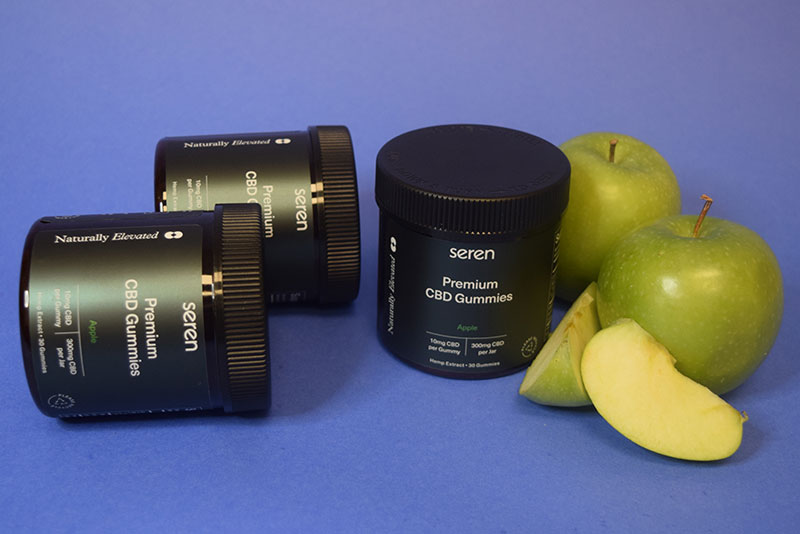

Edibles, vape pens, tinctures… What’s the best way to take CBD?
It depends on what you’re looking for. Some persons don’t want to ingest anything. Therefore, they choose a topical CBD cream or lotion. “You can apply it to muscles, joints, and ligaments and still get a nice, localized release,” Dr. Chin says.
The large differences between edibles, tinctures, and vape pens are the speed of delivery and how long the results last. Vape works faster, but the effects can not last too long, usually about two hours, says Dr. Chin.
Tinctures and edibles require longer to effect but last four or five hours. “A tincture looks like a little liquid that you put under your tongue, and you feel relief within half an hour,” Dr. Chin says. “If you prefer to taste something, you choose an edible, whether it’s a capsule, gummy, or baked good.”
Is CBD safe?
“The first question I always get is, ‘Will this get me high?’ ” Skyler Bissell, CEO of the CBD powder company Oleo, says. “The second is, ‘Will it hurt me?’ ” We’ve already covered that the answer to the first question is no. The answer to the second question also appears to be an overwhelming no.
Hector Lopez, MD, helped to start a company called Supplement Safety Solutions, which helps supplement makers monitor and report adverse reactions to their products. “For CBD, there have been no significant adverse reactions reported in more than one million doses sold,” he says. “I would say CBD’s safety profile is remarkably high.”
In 2011, Brazilian researchers published a review of studies on CBD in the journal Current Drug Safety. They concluded that CBD appears to have few undesirable side effects. It doesn’t affect appetite, heart rate, body tempera\ture, blood pressure, or fine motor skills. The researchers also concluded that chronic use and doses up to 1,500 milligrams a day appear to be well tolerated. (For comparison’s sake, most people taking CBD consume less than 50 milligrams a day.) As we’ll see in the next chapter, the main reported side effects are drowsiness, fatigue, and diarrhea. These usually happen when you take too much CBD, and they dissipate or disappear when you reduce your dosage. A follow-up review, published in Cannabis and Cannabinoid Research in 2017, confirmed the earlier findings.
The primary cautionary note for most people has to do with drug interactions. CBD is heavily metabolized by the liver. It’s possible that CBD’s interactions with enzymes in the liver could affect how the liver metabolizes a second substance, such as a prescription medication. Depending on the nature of the chemical interaction, more of the prescription medication might get metabolized in the presence of CBD, or less might get metabolized.
CBD has been postulated to affect the absorption of some blood thinners and antidepressants. Drug interactions of any sort can be extraordinarily complex. A quick tip is that CBD appears to interact with medications in the same way that grapefruit juice does but perhaps more potently. If you’ve been told to watch your grapefruit intake while on a certain medication, it’s a good idea to ask your doctor about taking CBD while on that drug.
Side Effects of CBD
CBD is possibly safe to take in appropriate dosage. CBD can produce side effects, such as diarrhea, dry mouth, reduced appetite, fatigue, and drowsiness.
Recently, the only CBD product approved by the FDA is Epidiolex. It’s certified to treat two types of epilepsy. In addition to Epidiolex, state laws on the utilization of CBD differ.
Warnings and Special Precautions
Children:
Children may take a pharmaceutical CBD medication (Epidiolex) by tongue in amounts up to 25 mg/kg per day. This product is safe to use in children over the age of one who has certain medical conditions. It isn’t clear if other cannabinoid products are safe in children.
Pregnancy and breastfeeding:
Taking CBD while pregnant and nursing may be dangerous. CBD products contain other substances that are dangerous to a developing fetus or newborn. So, we recommend not using CBD while pregnant or breastfeeding.
Liver disease:
People could take a lower dose of CBD if they have liver illness.
Parkinson’s disease:
Some research suggests that taking high doses of CBD might make muscle movement worse in people with Parkinson’s disease.
When buying Cannabis products, what should I look for?
“There are literally hundreds of CBD brands at this point,” says Brandon Beatty, CEO of Bluebird Natural ingredients and senior vice president of the US Hemp Roundtable when purchasing, there are several things to remember.
Has CBD been tested by a 3rd party lab?
Almost every expert Health spoke with concurred that you should have your CBD products evaluated by a third party to ensure an accurate label. It is a legitimate problem in the market; for example, a study published in the Journal of the American Medical Association in 2017 discover that 26% of CBD products included minor amounts than maintained on the label. If you don’t see it on the product’s label, look for a quality management stamp or certificate of completion from a third party or check the company’s website.
How does the label appear?
We’re not talking about the millennial typeface or the hue. According to Beatty, if it’s a nutritional supplement, it should include a back panel with an FDA declaration and warning section. “It would be perfect if we could also get accessibility to their third-party lab testing reports.”
Does it claim to cure any diseases?
If that’s the case, you should possibly pass. “Any company that produces Sickness claims must be avoided if at all possible,” Beatty advises. “If that’s the case, it shows they’re either eager to breach the rules or don’t know what the rules are.”
Dosing
Adults have traditionally taken CBD in quantities of 200 mg or less per day. To find out just what dose is best for a certain disease, consult with a medical professional. You also need to take advice from a healthcare provider for more details about using Epidiolex, a medication CBD medicine.
Is there a batch number on the product?
When there’s a recall on raw chicken or packaged cabbage, you check and ensure the one you bought isn’t going to make you sick. “With Cannabidiol, you should be able to do the same.” it is a big predictor of whether or not they’re on the right track.
“There should be a technique to identify this merchandise if it was created incorrectly so the manufacturer can issue a recall,” says the author.
Are there any other components in it?
You should be aware of what you’re taking in conjunction with the main event, as with any complement. “Occasionally, I observe that [CBD makers] will add estrogen,” Dr. Chin explains.

Can I give CBD to my dog?
Have you thought about giving your pet a CBD dog biscuit? “We believe CBD products to be safe in general. They may improve your pet’s anxiety,” said the study’s author. However, the problem with Cannabis products for pets is the same as with people: there isn’t enough study. “I think there are some good things out there now,” but I’m not sure how to interpret them apart right now.”
What to know about broad-spectrum CBD?
One of the three primary types of cannabinoids is broad-spectrum CBD. Full-spectrum CBD and CBD isolate the other options. Broad-spectrum CBD often includes a variety of naturally found cannabis chemicals but no tetrahydrocannabinol (THC).
CBD isolate only pure CBD and no other cannabis plant components, whereas full-spectrum CBD comprises all cannabis Sativa plant ingredients, with a maximum of 0.3 percent According to anecdotal evidence, people have reported good outcomes for anxiety, pain, and other diseases while using CBD products. This article reviews some of the uses of broad-spectrum CBD and lists some of the best CBD oils.
What Is CBD Oil?
Cannabidiol (CBD) is a chemical substance that operates throughout the body, such as on some brain regions. It is gaining popularity in the health community. CBD comes from the hemp plant and it is non-intoxicating. Some believe it may have health and wellbeing benefits. When cannabis is harvested from the plant, it is mixed with a carrier oil such as olive or coconut oil to boost accessibility.
Why Seren CBD?
When people want to trust the source, they turn to Seren CBD products. It was established for people who are looking for products that can promote their wellbeing. Every product we create originates from a distribution chain and is thoroughly tested (and tested and tested again).
We believe that our products should be fantastic and we’ve carefully selected formulations that we use. We recognize that everyone’s life (including our dogs and cats) is unique, so we’ve created a product portfolio. In addition, we are a dosing mechanism that allows you to customize your self-care completely.
What is broad-spectrum CBD?
Broad-spectrum CBD oil contains CBD and a variety of additional cannabinoids and terpenes, comparable to full-spectrum CBD oil. Broad-spectrum CBD has no traces of THC. It is ideal for those who desire the advantages of a complete package without the psychoactive effects of THC. Even if the amount of THC in a full-spectrum product is less than 0.3 percent, there is a risk of turning up positive on a drug test if you use it.
CBD may come from the cannabis Sativa plant in a variety of methods. These are some of them:
The CBD concentration may be affected by the cannabis plant’s strain, categorization, and extraction procedure. Between full-spectrum CBD and CBD isolation, broad-spectrum CBD is a good compromise. While broad-spectrum CBD comprises a variety of chemicals, it usually does not include THC.
Broad-spectrum CBD vs. other forms
When CBD is taken, it can have various effects on the body. CBD and other compounds in broad-spectrum CBD engage with the endocannabinoid system’s CB1 and CB2 receptors.
This signaling system is in charge of a variety of body activities. Broad-spectrum products may have stronger effects since they contain additional components that function synergistically. The ‘entourage effect’ is what this is called. Broad-spectrum CBD contains 0.0% THC. Thus it will not cause any unpleasant ‘high’ effects.
Although there has been some published research, there are currently very few studies on the many forms of CBD or which kind may be beneficial for a certain health problem.
CBD isolate
CBD isolate is a pure form of cannabinoid. It includes no other cannabis plant compounds. It generally comes from hemp plants, which typically have little amounts of THC. CBD isolate is a crystal kind of CBD, and it is often ground up and sold as a powder. It may also be called CBD crystals.
Some people consider that CBD isolate is the safest to employ as it is pure. But it is a highly refined product. Also, because it does not include any other potentially useful compounds, it may not offer all the health advantages of broad and full-spectrum CBD.
A 2015 research indicates that to reduce pain with CBD isolate, people may have to use much higher doses than other varieties of CBD.
Broad-spectrum CBD
Broad-spectrum CBD products include almost every natural ingredients found in the cannabis plant. But this form of CBD is THC free. Due to this, broad-spectrum products are different from full-spectrum products. Full-spectrum carries a trace amount of THC — less than 0.3 percent which is federally legal.
Broad-spectrum oils and tinctures
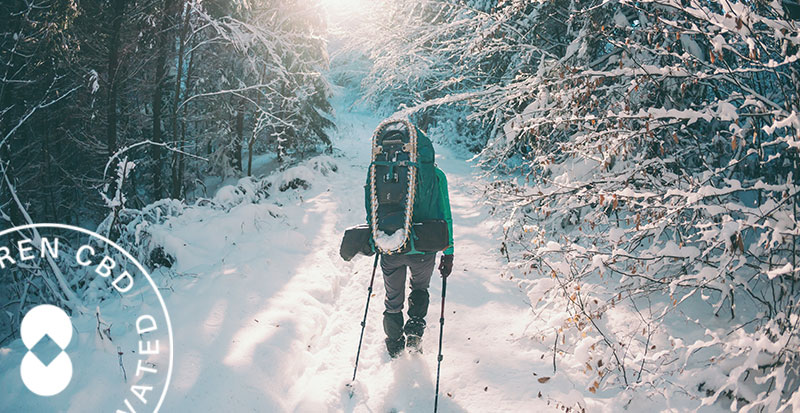
How we chose the best broad-spectrum CBD products
We know how much you’re curious about what broad-spectrum CBD products to try. Therefore, we’ve formed up some excellent choices to help you get started. Each product:
- is made with U.S.-grown hemp
- shows prrof of the third-party testing by an ISO compliant lab
- certifications and manufacturing processes
- is free of heavy metals, pesticides, and molds.
- includes no more than 0.3 percent THC
- product efficacy
- overall naturally occurring ingredients
Is broad-spectrum CBD right for you?
If you want to enjoy all the advantages the cannabis plant has to provide, full-spectrum CBD may be excellent. On the other hand, if want pure CBD, isolate maybe your best choice.
But if you want a wide range of uses while still preventing THC, then you’ll possibly love broad-spectrum products the best.
Cannabidiol’s final verdict
Some CBD suppliers have come under fire from the authorities for making outlandish, groundless claims. We can’t estimate beneficial amounts without enough rising information from human research. This is because CBD is generally sold as an uncontrolled supplement, it’s impossible to know what you’re getting when you purchase from unverified retailers. If you decide to use CBD, talk to your physician first to ensure it won’t interfere with any other prescriptions you’re taking.

